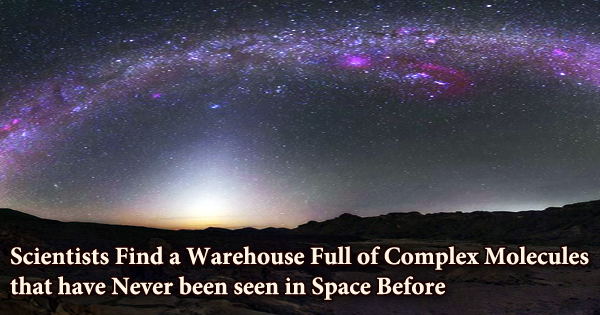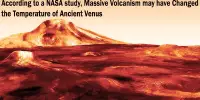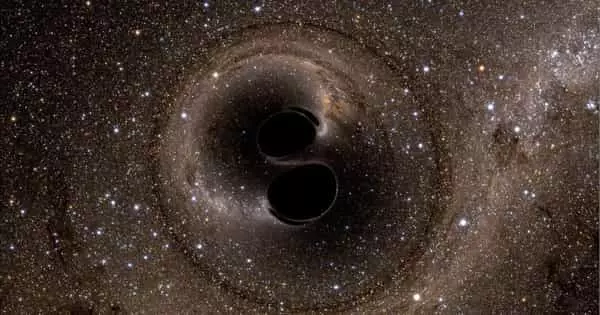By detecting individual polycyclic aromatic hydrocarbon molecules in the interstellar medium for the first time, scientists have discovered a vast, previously unknown reservoir of new aromatic material in a cold, dark molecular cloud, and are beginning to answer a three-decade-old scientific mystery: how and where do these molecules form in space?
“We had always thought polycyclic aromatic hydrocarbons were primarily formed in the atmospheres of dying stars,” said Brett McGuire, Assistant Professor of Chemistry at the Massachusetts Institute of Technology, and the Project Principal Investigator for GOTHAM, or Green Bank Telescope (GBT) Observations of TMC-1: Hunting Aromatic Molecules. “We discovered them in this research in cold, dark clouds where stars had not yet begun to develop.”
Scientists are familiar with aromatic compounds, often known as PAHs (polycyclic aromatic hydrocarbons). Aromatic molecules may be found in the chemical constitution of humans and other animals, as well as in food and pharmaceuticals. PAHs are also pollutants produced by the combustion of a variety of fossil fuels, and they are among the carcinogens produced when plants and meat are burned at high temperatures.
“Polycyclic aromatic hydrocarbons are thought to contain as much as 25-percent of the carbon in the universe,” said McGuire, who is also a research associate at the Center for Astrophysics | Harvard & Smithsonian (CfA). “For the first time, we have a direct window into their chemistry, allowing us to investigate in great detail how this vast store of carbon reacts and develops as stars and planets form.”
PAHs have been suspected in space since the 1980s, but the latest research, which was published in nine publications over the last seven months, is the first solid confirmation of their presence in molecular clouds. To find the elusive molecules, the team used the 100m behemoth radio astronomy GBT on the Taurus Molecular Cloud, or TMC-1, a large, pre-stellar cloud of dust and gas about 450 light-years from Earth that will eventually collapse in on itself to form stars, and what they discovered was astounding: not only were the accepted scientific models incorrect, but there was a lot more going on in TMC-1 than the team could have imagined.
“From decades of previous modeling, we believed that we had a fairly good understanding of the chemistry of molecular clouds,” said Michael McCarthy, an astrochemist and Acting Deputy Director of CfA, whose research group made the precise laboratory measurements that enabled many of these astronomical detections to be established with confidence. “These new astronomical observations reveal that these molecules are not only prevalent in molecular clouds, but in far larger numbers than traditional theories anticipate.”
McGuire went on to say that earlier research had only confirmed that PAH compounds existed, but not which ones. “For the last 30 years or so, scientists have been observing the bulk signature of these molecules in our galaxy and other galaxies in the infrared, but we couldn’t see which individual molecules made up that mass. Now, with the addition of radio astronomy, we can see individual molecules instead of this large mass that we can’t distinguish.”
To their astonishment, the researchers didn’t find just one novel molecule in TMC-1. The team discovered 1-cyanonaphthalene, 1-cyano-cyclopentadiene, HC11N, 2-cyanonaphthalene, vinylcyanoacetylene, 2-cyano-cyclopentadiene, benzonitrile, trans-(E)-cyanovinylacetylene, HC4NC, and propargylcyanide, among other things, as detailed in several articles.
“It’s like walking into a boutique shop and only looking at the front-end merchandise, never realizing there was a rear room. We’ve been gathering small molecules for around 50 years and have recently located a back door. When we opened that door and looked in, we found this giant warehouse of molecules and chemistry that we did not expect,” said McGuire. “There it was, all the time, lurking just beyond where we had looked before.”
Following McGuire’s first identification of benzonitrile in TMC-1 in 2018, McGuire and other scientists at the GOTHAM project have been “searching” for chemicals in TMC-1 for more than two years. The findings of the project’s most recent observations might have long-term implications in astrophysics.
“We’ve stumbled onto a whole new set of molecules unlike anything we’ve previously been able to detect, and that is going to completely change our understanding of how these molecules interact with each other. It has downstream ramifications,” said McGuire, adding that eventually these molecules grow large enough that they begin to aggregate into the seeds of interstellar dust.
“When these molecules grow large enough to become interstellar dust seeds, they have the potential to alter the makeup of asteroids, comets, and planets, as well as the surfaces on which ices develop, and maybe even the places where planets originate inside star systems.”
The finding of novel compounds in TMC-1 has consequences for astrochemistry as well, and while the team does not yet have all of the answers, the effects will be felt for decades. “We’ve gone from one-dimensional carbon chemistry, which is very easy to detect, to real organic chemistry in space in the sense that the newly discovered molecules are ones that a chemist knows and recognizes, and can produce on Earth,” said McCarthy.
“And that’s only the beginning. Whether these organic molecules were produced or carried there, they exist, and knowing that is a significant step forward in the area.”
Scientists had cataloged about 200 distinct molecules in the Milky Way’s interstellar medium before the launch of GOTHAM in 2018. These new findings have made the team question, and rightfully so, what more is out there. “The amazing thing about these observations, about this discovery, and about these molecules, is that no one had looked, or looked hard enough,” said McCarthy. “It makes you wonder what else is out there that we just haven’t looked for.”
This novel aromatic chemistry discovered by scientists isn’t exclusive to TMC-1. ARKHAM A Rigorous K/Ka-Band Survey Hunting for Aromatic Molecules, a companion survey to GOTHAM, has discovered benzonitrile in many more objects. “Incredibly, we found benzonitrile in every single one of the first four objects observed by ARKHAM,” said Andrew Burkhardt, a Submillimeter Array Postdoctoral Fellow at the CfA and a co-principal investigator for GOTHAM.
“This is significant because, while GOTHAM is pushing the boundaries of what we believed was possible in space chemistry, our findings suggest that what we learned about aromatic compounds in TMC-1 might be applied to dark clouds everywhere. The birthplaces of stars and planets are these black clouds. As a result, these hitherto unseen aromatic compounds will have to be considered at each subsequent phase in the formation of stars, planets, and solar systems like our own.”
















